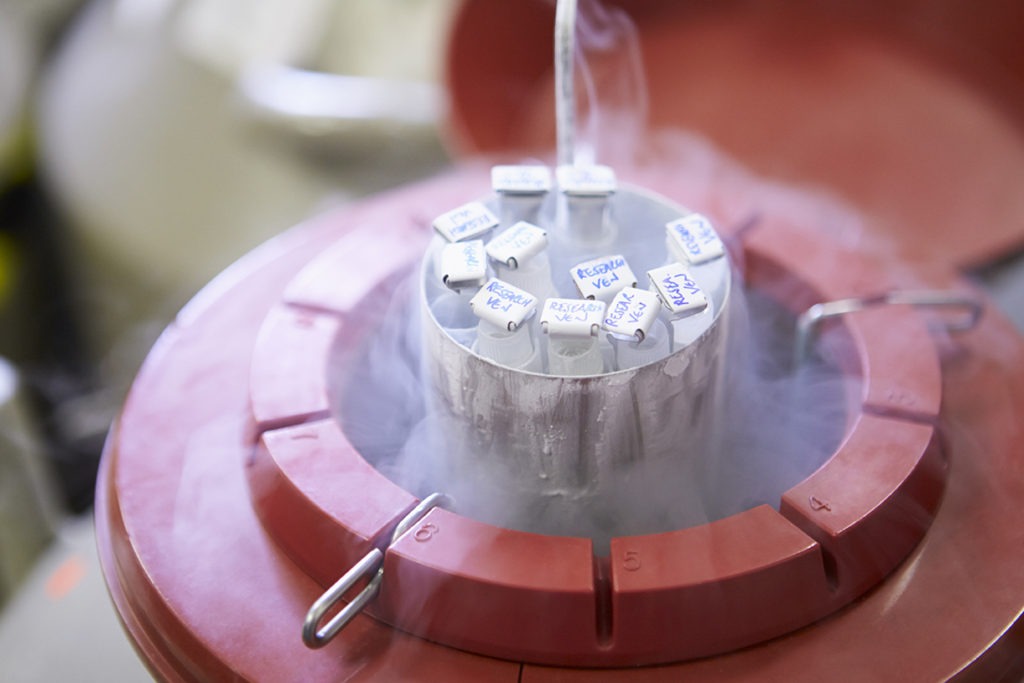Cryopreservation (preservation by freezing) is the process of preserving human (animals too!) tissue, cells and organs at sub-zero temperatures in order to maintain their functionality for future use.
The common method of maintaining the deep freezing effect includes storage in liquid nitrogen (and LN2 in vapor state as well) at the temperature of -196˚ C. The idea is to halt chemical and enzymatic activity in the required tissue by low temperature, thus conserving its use at future times. Cryoprotectants are applied to ensure the product isn’t damaged during the freezing process due to ice crystal formations which can interfere with a cell’s viability.
Much of this application of preservation is practiced for of brain cell nuclei, umbilical cord blood, hematopoietic stem cells of the immune system for the purpose of autologous implantation after chemotherapy, and in the case of IVF related applications – the freezing of embryos, sperm cells – in various developing stages – and oocytes (egg cells).
Uses in Fertility
Cryopreservation can be useful after an IVF cycle procedure has been successfully completed. An IVF cycle is a multistage technique in which there is stimulation of a woman’s ovaries in order to encourage multiple egg release for harvesting. Retrieval of these eggs and administration of in-vitro fertilization are completed which result in creation of embryos. In order for pregnancy to occur, only one of the finalized embryos will be transplanted back into the uterus per cycle. The remaining embryos are then frozen and set aside , for future pregnancies.
Thanks to this unique method of conservation , thousands of babies have been born worldwide.
Another practical use is oocyte (egg) and sperm cryopreservation. This is very commonly relevant for women wishing to delay pregnancy, or women whose eggs are in danger of depletion or the testing of times on egg quality and viability which occurs due to advanced age . Likewise, men wishing to safeguard their sperm for future use commonly preserve their sperm specimens and store them at sperm banks. Males diagnosed with cancer are usually encouraged to preserve as much sperm as possible before chemotherapy begins.
An important implication of the long-term storage of embryos, oocytes, and sperm is the ability to conduct long-haul distances with these fragile biological specimens without causing them harm. Professional staff at babysteps are specially trained to carry out intercontinental IVF transfers for patients in need of such service.
—-
Cryogenics – from Greek κρύο (cryo) – “cold” + γονική (genic) – “having to do with production”. Cryobiology – The branch of biology involving the study of the effects of low temperatures on organisms (most often for the purpose of achieving cryopreservation).






